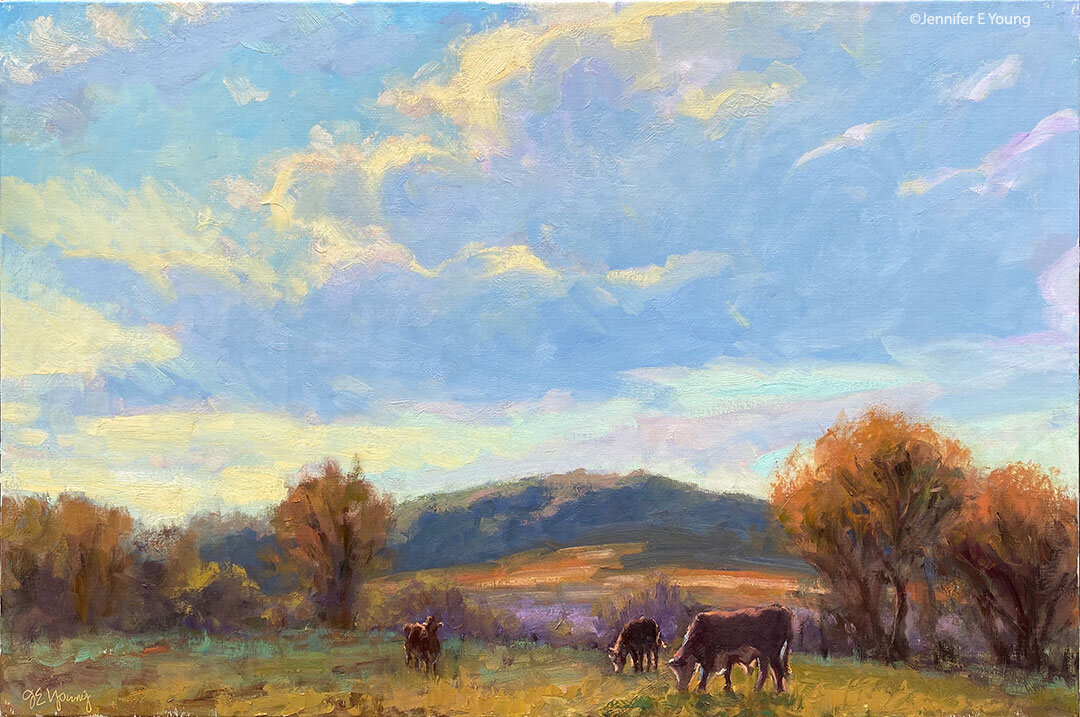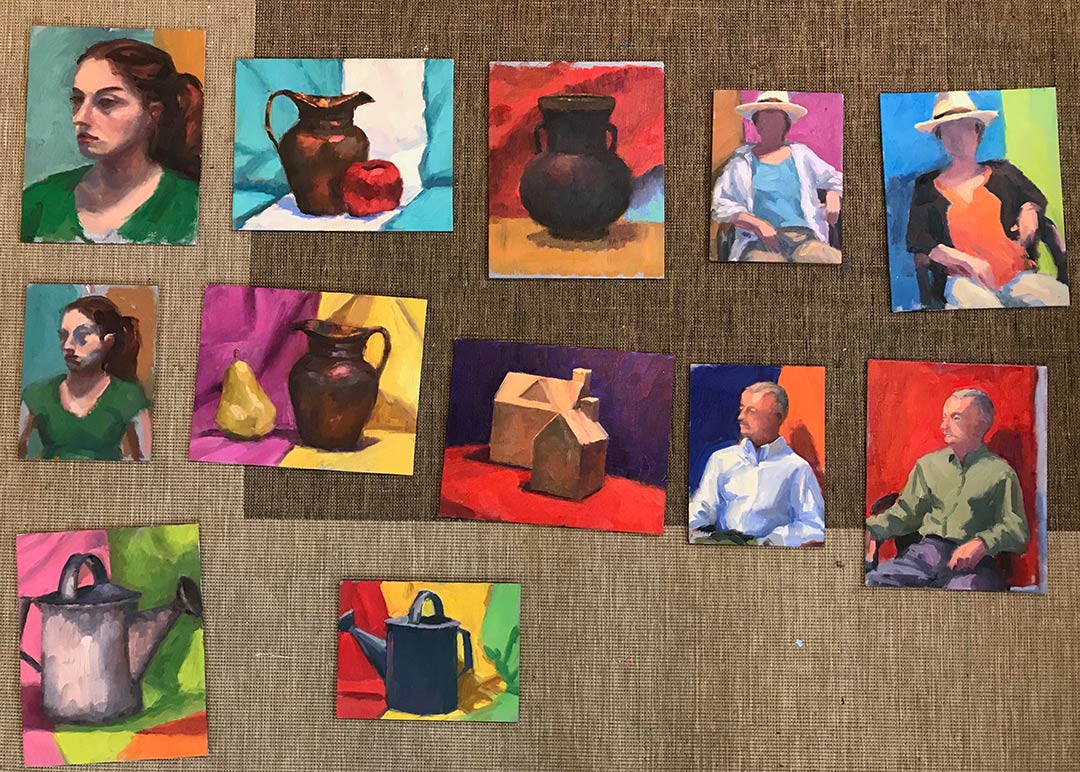Oil painting; Possible solutions to common challenges
/Here is a followup to yesterday's post; "Why paint with oils?"
- If you can't stand the smell of turpentine, use odorless mineral spirits (OMS)Â or Turpenoid Natural
to thin and clean up. *Be aware though that while OMS is easier on the nose it is no less toxic for those who are sensitive to turps. In that case your best alternative is to clean up with Turpenoid or some other natural product.
- To avoid "mud", refrain from mixing too many colors together.  Try mixing with your palette knife instead of your brush. This will allow the paint load to sit on the end of the brush and not mush down into the brush toward the ferrules.
- Avoid the overuse of white. White will lighten values but also cool and dull colors, giving a chalk-like appearance to most colors if overused.
- Avoid the overuse of black or dark earthtones. Some would say avoid ANY use of black as it is a dead color. With hesitation I will say I have nothing against black if used judiciously. But I usually suggest beginning students keep black off of their palette because there is a tendency to reach for the black (or umber) for anything that requires shading or darker values. This can result in an overly dull, flat looking painting. If you use a mixture of your darkest primaries and just a touch of a secondary you can achieve much richer, more vibrant darks. Ultramarine + Alizarin Crimson + Viridian or Sap Green will "read as" black but be much richer looking.
- Avoid over-working back into a wet section. Experiment with laying in your color and leaving it alone as much as possible. Over blending and mushing your paint around on your canvas can lead to  "mud". If you need to go back into an area either wait until the paint "sets up" a bit, or scrape off and repaint the area.
 Experiment with other mediums:
- While absolutely no medium is necessary, it's fun to experiment with different painting mediums to enhance the behavior of your oils. There are a variety of mediums available that can help speed drying time, enhance the fluidity of you brush stroke, and help your paint strokes stay where you put them. Liquin
is a relatively odorless option that adds viscosity and helps speed drying. Copal medium is incredibly seductive but it does have a very strong odor as it is mixed with turpentine. Galkyd Lite
is what I'm using right now. It's very similar to Liquin but not as "slippery". *Note: Whatever you use, a little medium goes a long way.
- Some people experiment with alkyds. These are oil paints with alkyd resin mixed in, creating a faster drying oil paint. (Down side: they can appear more "plastic looking". Colors aren't as rich and can seem very bright and candy-like. They still clean up with turps or mineral spirits and can be used in combination with regular oil paints.)
- Some people experiment with water soluble oil paints. These clean up with water, and tend to dry somewhat faster than regular oils. The cleanup can be a real advantage to those who love oils but are allergic to turps or mineral spirits. (Down side: the texture can seem stickier and tackier to those used to oils. Synthetic brushes are recommended for these paints as bristle brushes turn mop-like when used with water.)


 One of my favorites from this period
"Faith", Oil on Canvas (sold)
One of my favorites from this period
"Faith", Oil on Canvas (sold)











